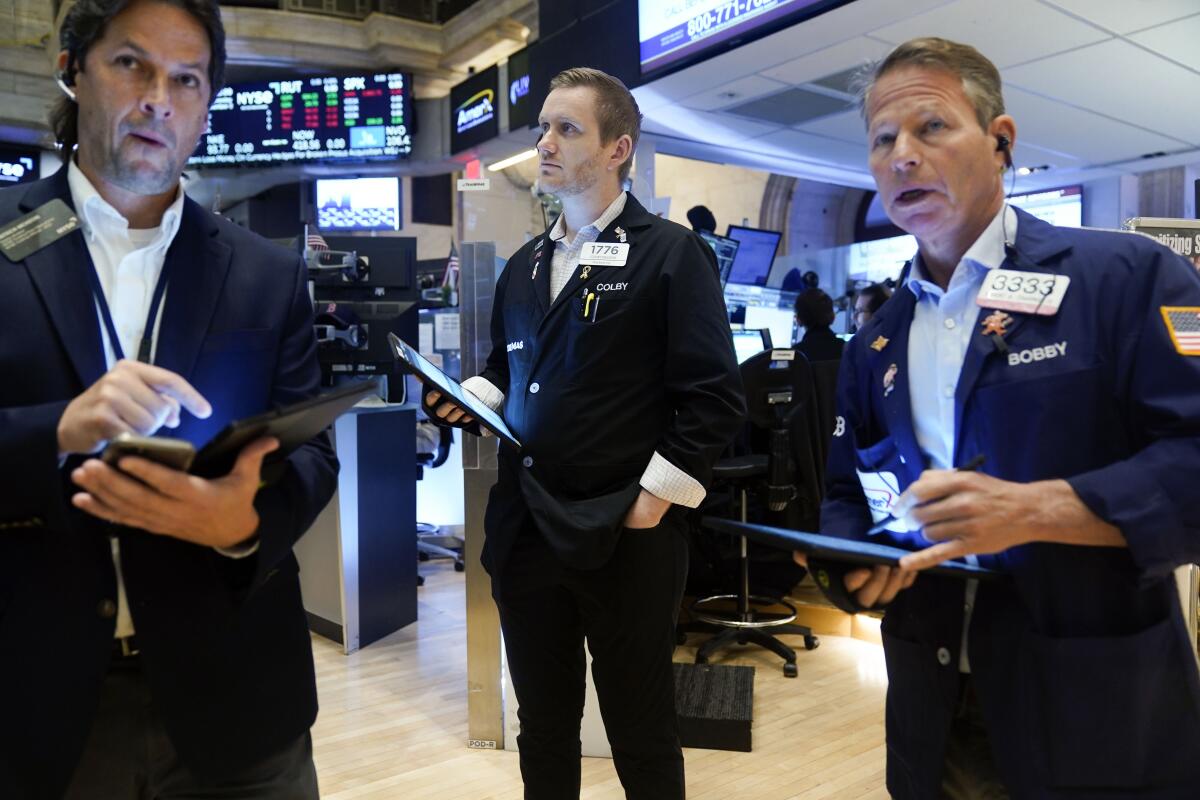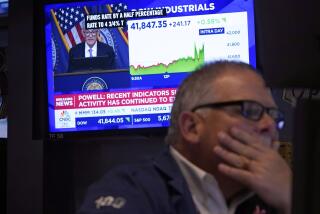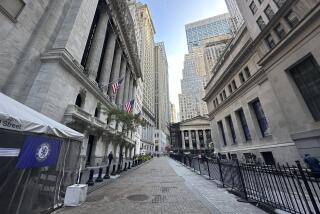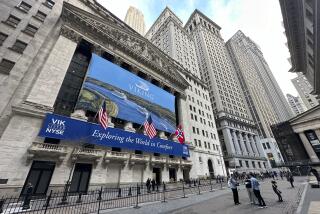Stocks fall after Fed says it’s too soon to pause rate hikes

Stocks fell sharply after Federal Reserve Chair Jerome H. Powell signaled that interest rates will need to go even higher than previously thought in order to tame the worst inflation in decades.
The Fed also raised its benchmark rate by three-quarters of a percentage point Wednesday, its fourth consecutive hike of that magnitude and its sixth this year.
Markets had initially rallied after Fed policymakers suggested in a statement that they might slow the pace of increases. Those gains disappeared and stocks turned lower again after Powell delivered the sobering news that the Fed may need to hold back the economy with high interest rates for some time before the fight against inflation is done.
“It’s very premature, in my view, to think about or to be talking about pausing our rate hikes,” Powell in a news conference. “We have a ways to go.”
The remarks dashed Wall Street’s hopes that the central bank would signal that it might be considering easing off its aggressive rate increases, which have weighed on the stock market this year. Higher rates not only slow the economy by discouraging borrowing but also make stocks look less appealing compared with lower-risk assets such as bonds and CDs.
The Standard & Poor’s 500 index fell 2.5%, its third straight drop. It had been up 1% earlier. The Dow Jones industrial average fell 1.5% and the Nasdaq composite slid 3.4%.
Long-term Treasury yields jumped after a brief pullback. The yield on the two-year Treasury, which tends to track market expectations of future Fed action, rose to 4.58% from 4.55% shortly before the Fed released its statement. The yield on the 10-year Treasury, which helps set mortgage rates, climbed to 4.09% after falling to 3.98% earlier in the afternoon.
The Fed’s move raised its key short-term rate to a range of 3.75% to 4%, its highest level in 15 years. It was the central bank’s sixth rate hike this year, a streak that has made mortgages and other consumer and business loans increasingly expensive and heightened the risk of a recession.
In a statement announcing the rate hike, the Fed suggested that it could soon shift to a more deliberate pace of rate increases. The Fed also said that in coming months it would consider the cumulative effect of its large rate hikes on the economy.
Any encouragement that gave investors faded when Powell said that the central bank would rather make a mistake of taking interest rates too high than easing too quickly, noting that a premature pullback on rate hikes could lead inflation to become entrenched, which risks more pain for households.
Powell also said that regardless of whether the Fed dials down its interest rate hike in December, it may still end up pulling its key short-term rate ultimately to a higher level than previously thought if data show that inflation is worse than expected.
Wall Street has been closely watching the latest economic data, which are heavy on the employment market this week. It has remained strong despite inflation, which is being taken as a sign that the Fed will have to remain aggressive in its fight against high prices.
The latest jobs data from private payroll company ADP show that companies added positions at a greater pace than expected in October. The report follows hotter-than-expected data from the government Tuesday on job openings.
“It’s sort of confirming that the Fed still has more work to do,” said Ryan Grabinski, managing director of investment strategy at Strategas, a Baird company.
Investors will get more employment data with the government’s weekly unemployment report Thursday and a broader monthly jobs report Friday. They have been paying keen attention to the latest round of company earnings results to get a better sense of inflation’s effect on corporate profits and outlooks. It’s been a mixed bag so far.
All told, the S&P 500 fell 96.41 points to 3,759.69. The Dow lost 505.44 points to close at 32,147.76 and the Nasdaq slid 366.05 points to 10,524.80.
The 11 sectors in the S&P 500 closed in the red after shedding all their gains after a brief rally immediately after the Fed statement. Technology stocks, retailers and healthcare companies were among the biggest weights on the index. Apple fell 3.7%, Amazon dropped 4.8% and Johnson & Johnson slipped 1.5%.
Drugstore operator CVS rose 2.3% after raising its profit forecast following a strong third quarter. Short-term vacation rental marketplace Airbnb fell 13.4% after warning investors that growth in bookings will slow in the fourth quarter. Beauty products maker Estee Lauder slid 8.1% after slashing its profit forecast as COVID-19 lockdowns in China and inflation hurt business.
More to Read
Inside the business of entertainment
The Wide Shot brings you news, analysis and insights on everything from streaming wars to production — and what it all means for the future.
You may occasionally receive promotional content from the Los Angeles Times.










